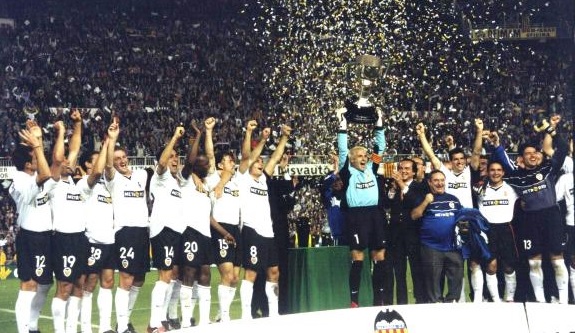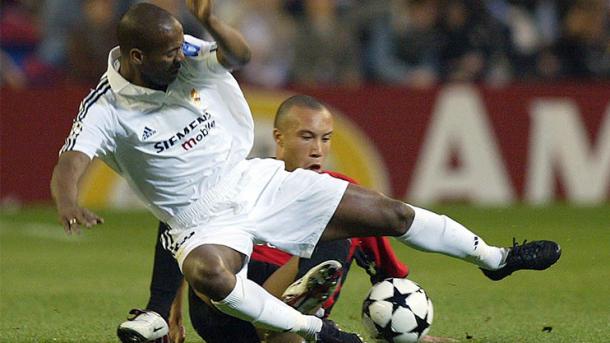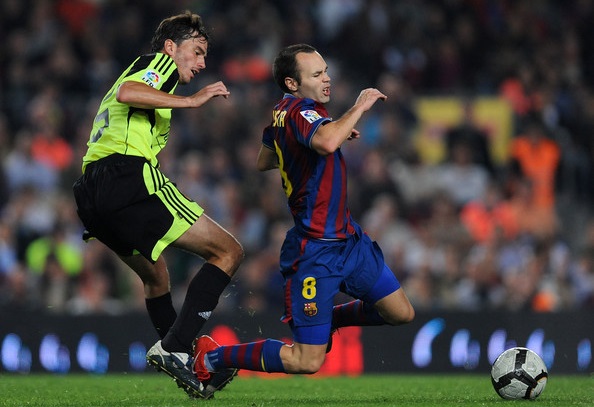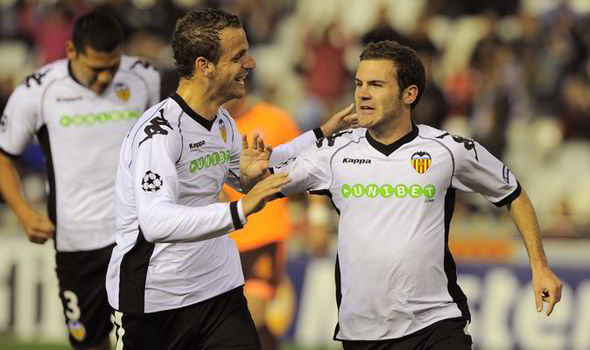For two players so synonymous with each other, the stories of Zinedine Zidane and Francisco Pavón could not have unravelled much more differently.
The two were the pair selected to be the poster boys of Florentino Pérez’ brave new world in his first spell as Real Madrid president at the beginning of the millennium.
Zidane, Luis Figo, David Beckham and the rest of the Galácticos would score the goals, dominate the highlights shows and – most importantly – sell the shirts, while the humdrum homegrown talents who became known as the Pavónes would fill in the gaps, take the smaller wages and generally bring balance to the force.
Sub-par Pavónes fail to live up to expectations
The formula never really worked, for a number of reasons. Chief among these factors was the most simple; the Pavónes weren’t good enough. Players like Oscar Miñambres, Álvaro Mejía and Raúl Bravo were never expected to develop into world-class superstars but their lack of ability left Madrid fighting a losing battle of defensive fragility.
In the 2001-02 season, when Madrid finished third behind Valencia and Deportivo La Coruña, Madrid conceded 44 goals; 17 more than champions Valencia and only six fewer than relegated Las Palmas. That they were the highest scorers in the division was rendered irrelevant.

Of course, that was also the season that Madrid won La Novena, their then-record ninth Champions League title. That trophy was one won very much by the Zidanes. With Pavón and the rest of the youngsters dropped for the final, it was the imperious Frenchman who conjured perhaps the most iconic moment of the Galáctico era – his stupefying volley against Bayer Leverkusen in the final.
The second reason for the failure of the venture was the imbalance it left in the team. When Claude Makélélé, the finest defensive midfielder of the decade, pushed for a pay rise – it is thought his wages were six times smaller than those enjoyed by Zidane – he was shipped out to Chelsea, where he would become an icon.
Legendary centre-half Fernando Hierro left in 2003 as his career wound down and Raúl Bravo, one of the more promising youth players, was forced to play out of position in the centre in his absence with other candidates for the position proving themselves to be totally out of their depth.
Imbalance leads to squad disharmony
All this while, the superstars were arriving at a rate of one a season in the attacking half of the pitch, whether they were needed or not. Figo, Zidane, Ronaldo, Beckham joined for astronomical sums, and it is noteworthy that two of the four – Figo and Beckham – played in the same position. Makélélé was not properly replaced, with Zidane complaining that the club were ‘adding another coat of gold paint to the Bentley when the engine had been sold’.

This objection was symptomatic of the third reason for the failure of the Zidanes y Pavónes experiment, its lack of team cohesion. Speaking in his new role as manager earlier this year, Zidane expressed his distaste for the phrase, claiming that “we’re all equals in the dressing room”, but this was quite blatantly not the case in his playing years.
What the youngsters won in game time, they lost in dignity. Pavón and the rest were the players you are forced to pick at the end of a Fantasy Football draft because you’ve blown the rest of your budget on strikers and you have gaps to fill at the back. There was a clear rift in the dressing room, as Zidane himself admitted to Spanish TV station Antena 3 in 2006.
To revisit the Star Wars universe, if the Pavónes had been intended to bring balance to the force as Luke Skywalker, in reality they became more like Jar-Jar Binks; the character fans tolerated rather than enjoyed, and most would rather forget.
Pavón leaves for Zaragoza
And, indeed, the footballing world has forgotten Francisco Pavón. As seven managers took the reins in four years between the spells of Vicente del Bosque and Fabio Capello, faith in the programme dwindled and Pavón’s playing time dropped with it to the point where he played no competitive minutes in the 2006-07 season. At the end of that campaign he was released and joined Real Zaragoza, who had just finished sixth in La Liga and qualified for Europe. They were relegated the following year.
He was a consistent performer as Los Maños were promoted straight back to the top flight, but fell down the pecking order once the club returned to La Liga.

The last move of Pavón’s career came as he joined AC Arles-Avignon in the dying minutes of the 2010 summer transfer window, where he linked up with one of the other failed youngsters from his Madrid days in Álvaro Mejía. The minnows finished rock bottom of the French Ligue Un table, 15 points behind 19th-placed Lens and 26 points adrift of safety.
A career which had flickered into life amidst fame and promise fizzled out into at best obscurity, and at worst infamy. In 2011 he went on trial at West Ham, but failed to convince Sam Allardyce of his fitness as the Hammers adjusted to life in the Championship after relegation the previous year.
It took two clubless years, during which he refused to receive Spanish unemployment benefits, before Pavón officially called time on his playing career at the age of 33.
That Pavón, a La Liga, Champions League and UEFA Super Cup-winning defender should have been in a position to claim unemployment benefits ten years after his emergence as a player speaks volumes about the incongruous nature of his place as both stop-gap centre-half and ideological symbol for the biggest football club in the world.
Four years without a league title and seven without so much as a semi-final appearance in the Champions League were enough for the Zidanes y Pavónes experiment to be thrown on the Real Madrid scrapheap, and Pavón’s experience tainted a generation of potential stars to follow.
Finer players than he failed to make the grade having come through the youth ranks at the superclub. Juan Mata, Roberto Soldado, Juanfran and Borja Valero made fewer than 25 Real Madrid appearances between them before being thrown out and carving out careers for themselves at the top of the game all over Europe.

Dani Carvajal failed to feature once for the first team before being sent away to Germany and Bayer Leverkusen, where it took only one season for the club to change their mind and buy him back at a €1.5 million loss. Even then, Madrid chose to paper over a non-existent crack in their team as they signed another right-back, Porto’s Danilo, for €31.5 million. It seems that Florentino Pérez is still not ready to trust his youth team products again.
Barça perfect the art of youth development with Pérez stung
Perhaps what stung the most for Pérez about the failure of Project Pavón was the success enjoyed by Barcelona’s homegrown heroes in the years that followed, but their resources were hardly comparable.
Where Madrid promoted youth players to supplement their vast array of superstars, Barça signed occasional superstars to complement the diamonds polished by the legendary La Masia football academy.
The contrast in perceptions of the two clubs as a result is marked – for many, it is still ‘Barcelona good, Real Madrid bad’. This is a phenomenon that can be traced directly back to the failure of Pavón and his unfortunate teammates, and one which endures despite the colossal fees spent by the former on players such as Neymar and Luis Suárez.
Six Barça youth products played in the club’s 2015 Champions League final triumph – only four repeated the trick for Madrid in their combined victories in 2014 and 2016. While Madrid have contested two of the last three Champions League finals and scored five goals in the process, the only strike registered by a Madrid youth teamer was scored by Álvaro Morata – for Juventus.
The legacy of the Zidanes y Pavónes era means that, under Pérez at least, youth team products will never flourish freely at Madrid as they are allowed to do at the Camp Nou. Regardless of potential, the voracious appetite for instant success endures as the dominant emotion of the club.
And, as Los Merengues’ Champions League-winning squads of this century have shown, it is far easier to buy that success from elsewhere than to grow your own.










































